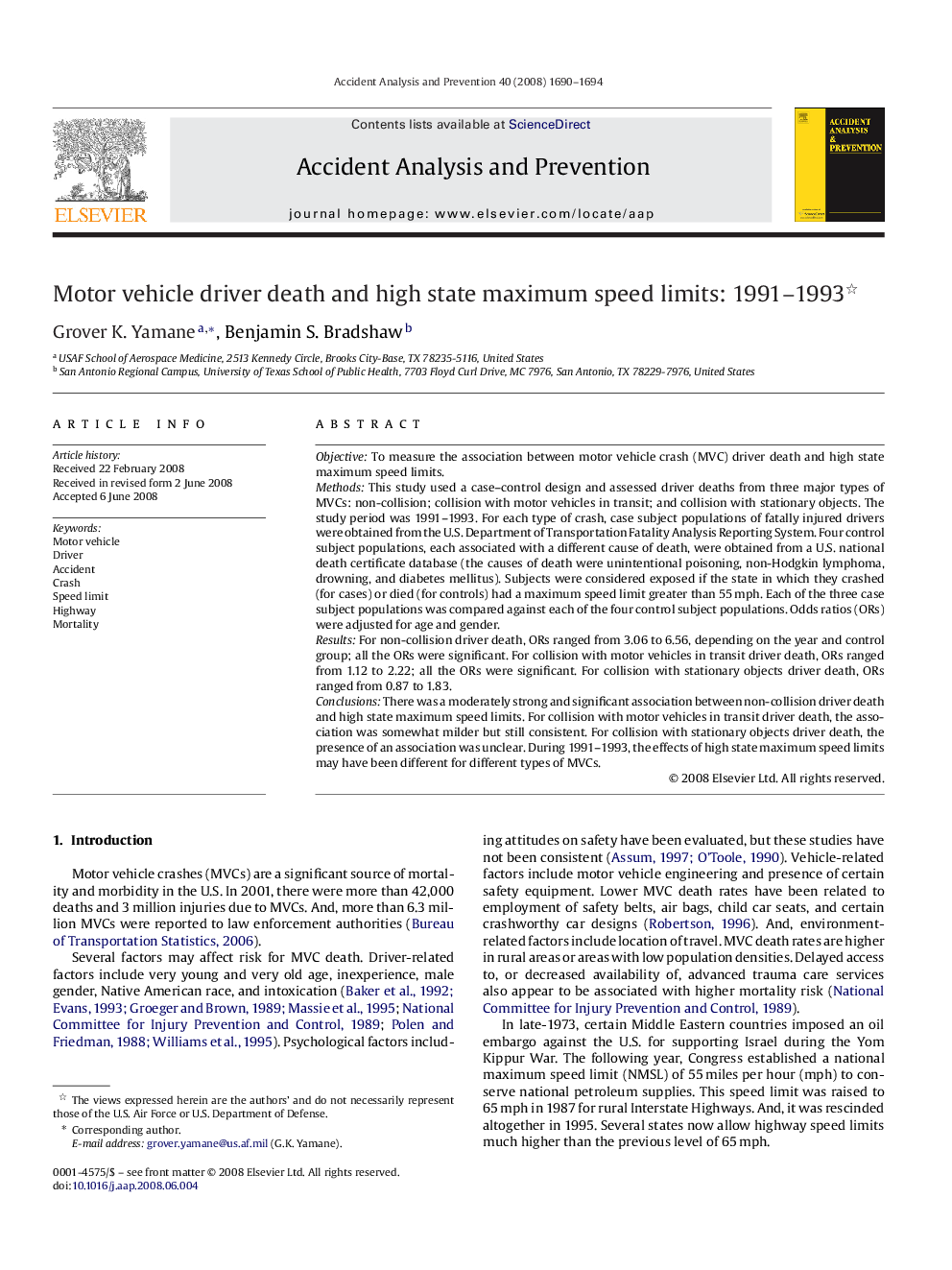| کد مقاله | کد نشریه | سال انتشار | مقاله انگلیسی | نسخه تمام متن |
|---|---|---|---|---|
| 573418 | 877398 | 2008 | 5 صفحه PDF | دانلود رایگان |

ObjectiveTo measure the association between motor vehicle crash (MVC) driver death and high state maximum speed limits.MethodsThis study used a case–control design and assessed driver deaths from three major types of MVCs: non-collision; collision with motor vehicles in transit; and collision with stationary objects. The study period was 1991–1993. For each type of crash, case subject populations of fatally injured drivers were obtained from the U.S. Department of Transportation Fatality Analysis Reporting System. Four control subject populations, each associated with a different cause of death, were obtained from a U.S. national death certificate database (the causes of death were unintentional poisoning, non-Hodgkin lymphoma, drowning, and diabetes mellitus). Subjects were considered exposed if the state in which they crashed (for cases) or died (for controls) had a maximum speed limit greater than 55 mph. Each of the three case subject populations was compared against each of the four control subject populations. Odds ratios (ORs) were adjusted for age and gender.ResultsFor non-collision driver death, ORs ranged from 3.06 to 6.56, depending on the year and control group; all the ORs were significant. For collision with motor vehicles in transit driver death, ORs ranged from 1.12 to 2.22; all the ORs were significant. For collision with stationary objects driver death, ORs ranged from 0.87 to 1.83.ConclusionsThere was a moderately strong and significant association between non-collision driver death and high state maximum speed limits. For collision with motor vehicles in transit driver death, the association was somewhat milder but still consistent. For collision with stationary objects driver death, the presence of an association was unclear. During 1991–1993, the effects of high state maximum speed limits may have been different for different types of MVCs.
Journal: Accident Analysis & Prevention - Volume 40, Issue 5, September 2008, Pages 1690–1694